The Cheapest Places To Retire in the US
When you're trying to balance a fixed income with an enjoyable retirement, cost of living is a crucial factor to consider.


Donna Fuscaldo
When you're trying to balance a fixed income with an enjoyable retirement, cost of living is a crucial factor to consider. After all, if your daily expenses eat up too much of your budget, you won't be left with much extra for anything fun, to leave an inheritance for your loved ones or even just as a cushion to give you peace of mind. No wonder that among retirees who move, 60% according to a Vanguard survey, do so to live somewhere less expensive.
To that end, we identified which of the 50 best places to retire in the U.S. offer below-average living costs for retirees. On top of affordability, all of these places rank well with us, taking into account safety, median incomes and poverty rates for retirement-age residents, as well as residents' sense of well-being and the availability of recreational and health care facilities. And these affordable places to retire are scattered across the nation, offering diverse options from mountains and beaches to small towns and college towns. Take a look at the list.
Disclaimer
See "How We Picked the Best Places to Retire" at the end of the list for details on our data sources and methodology.
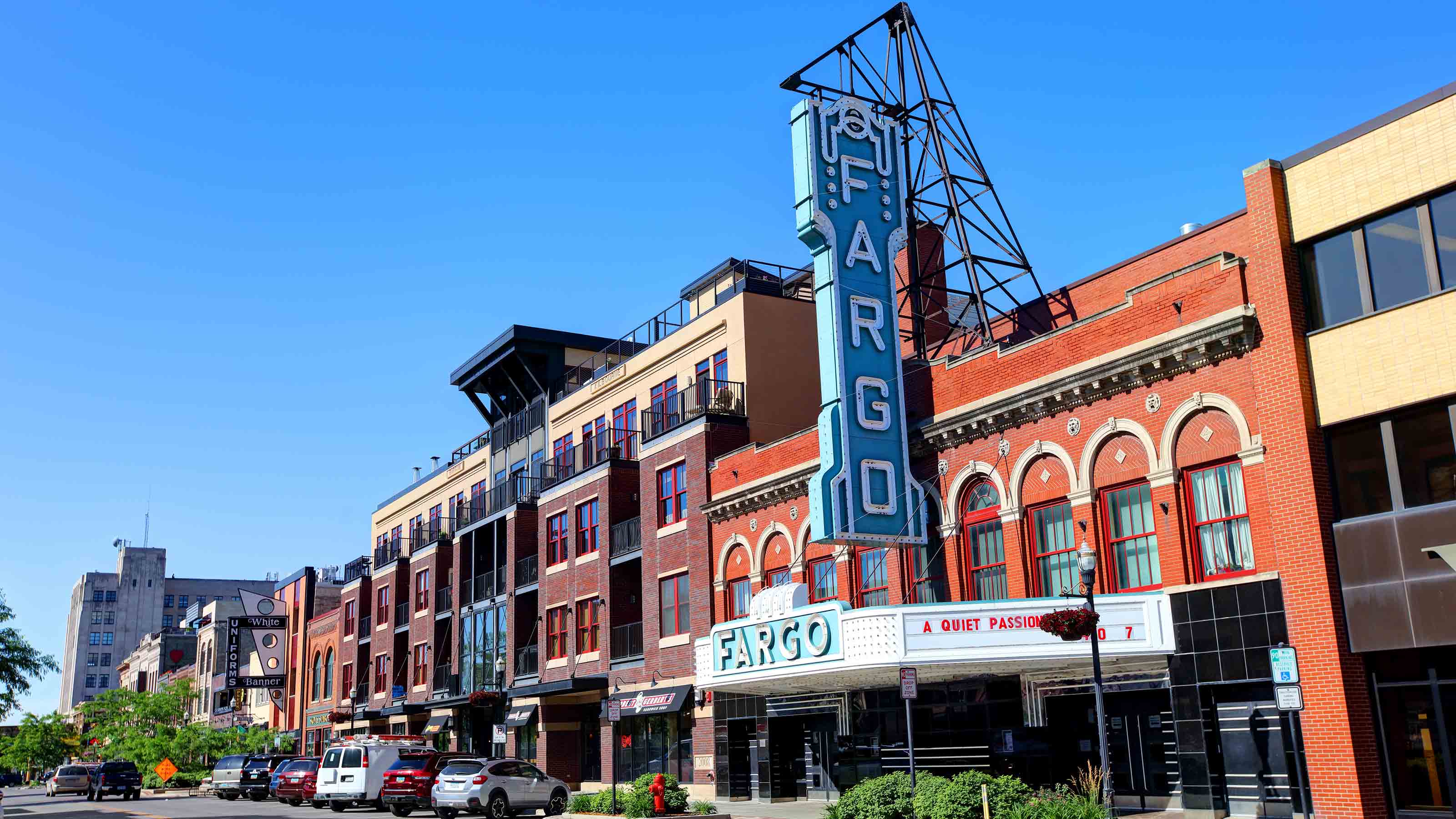
1. Fargo, N.D.
- City population: 133,188
- Share of population 65+: 13.6%
- Cost of living for retirees: 9.4% below the national average
- Average income for population 65+: $60,858
- Wellness score: 66
- State's tax rating for retirees: Tax Friendly
With its low costs and generous tax situation, North Dakota has consistently ranked highly among our best states for retirement. So we believe spending your golden years in the Peace Garden State to be a financially savvy choice for your retirement destination (albeit perhaps an unorthodox one). And Fargo fits the bill for affordability, with particularly low housing costs for retirees, 14.6% below the national average.

Sign up for Kiplinger’s Free E-Newsletters
Profit and prosper with the best of expert advice on investing, taxes, retirement, personal finance and more - straight to your e-mail.
Profit and prosper with the best of expert advice - straight to your e-mail.
North Dakota State University is based in Fargo and, along with a number of other area colleges, brings with it attractive amenities for retirees and co-eds alike. That includes sporting events and cultural attractions, such as numerous musical and theater performances. Just be sure to bundle up if you venture out in the winter months. The average low temperature in January is literally 0 degrees Fahrenheit, according to U.S. Climate Data, and only goes up to an average low 6 degrees Fahrenheit in the surrounding months.
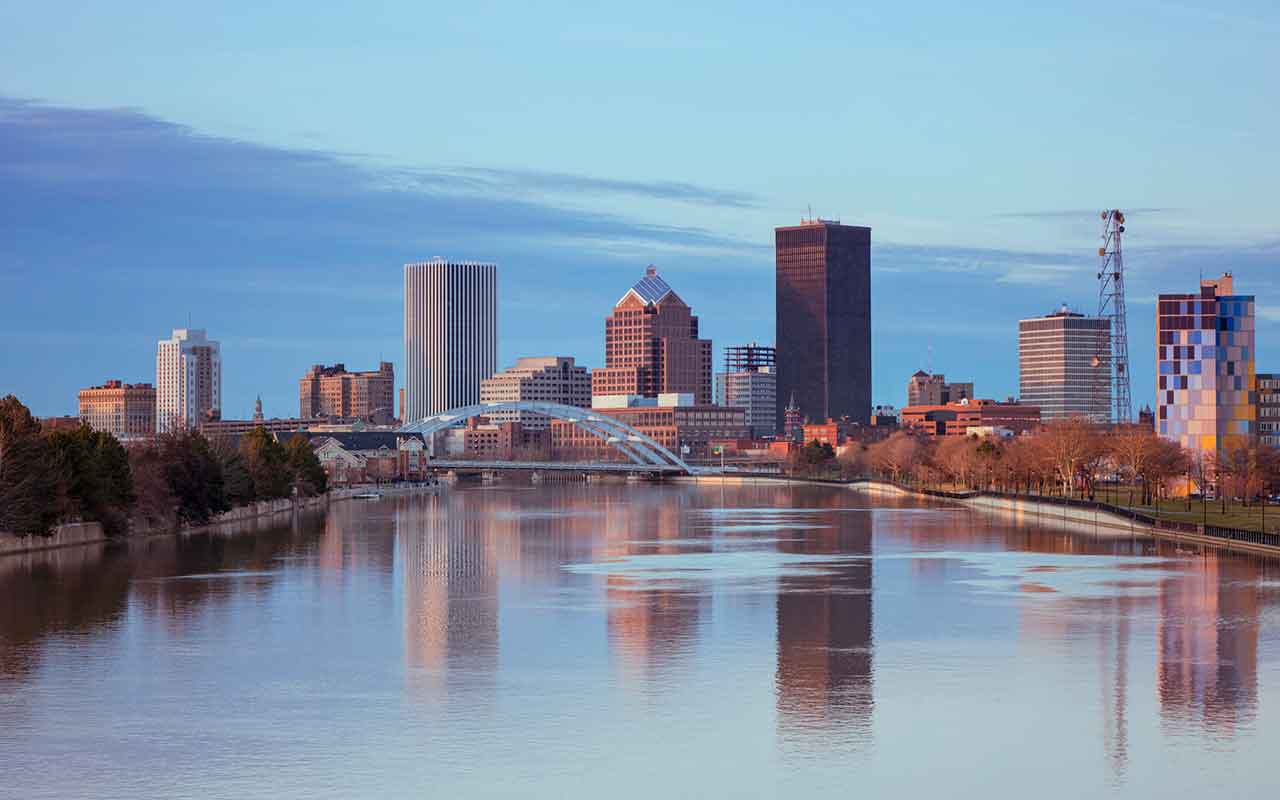
2. Rochester, N.Y.
- City population: 207,274
- Share of population 65+: 12.8%
- Cost of living for retirees: 11.4% below the national average
- Average income for population 65+: $36,552
- Wellness score: 63.0
- State's tax rating for retirees: Not Tax Friendly
While much of New York comes with above-average living costs, Rochester proves more affordable, slightly below average for retirees. Housing costs are notably cheap at about 64% below average for retired residents. Indeed, the median home value is $217,411, according to Zillow, compared with $357,469 for the entire U.S. and $764,868 in New York state.
That can leave plenty of room in your budget for warm coats, snow shovels and other winter gear. The average snowfall is a heavy 100 inches a year. Luckily, you have plenty of local wine options to help keep you warm year-round. The surrounding Finger Lakes Region is home to more than 100 wineries, all within a 90-minute drive of Rochester, and Casa Larga Vineyards is located just 20 minutes from downtown.

3. Richland, Wash.
- City population: 63,757
- Share of population 65+: 16.7%
- Cost of living for retirees: 0.5% above the national average
- Average income for population 65+: $65,224
- Community score: 59
- State's tax rating for retirees: Tax Friendly
Richland's metro area includes Kennewick, both of which qualify as great retirement destinations. But the smaller of the two, Richland, has an older population with a higher average income (Kennewick's is $57,989) and lower poverty rate (7.6% compared with 8.3% in Kennwick — both lower than the national poverty rate of 9.3% for people age 65 and older).
Whether you're partial to exploring the great outdoors or focusing on wine country, you have plenty of options — you don't even have to choose one over the other. You can enjoy boating and fishing on the Columbia, Yakima and Snake Rivers, and hiking or biking on the 23-mile Sacagawea Trail. There are also more than 200 wineries within a 50-mile radius, offering beautiful views and many wines to sample.

4. Albuquerque, N.M.
- City population: 560,274
- Share of population 65+: 17.2%
- Cost of living for retirees: 8% below the national average
- Average income for population 65+: $51,858
- Wellness score: 60
- State's tax rating for retirees: Least Tax Friendly
You can find a bright retirement in Albuquerque. The city tends to get 310 sunny days each year through all four seasons. That gives you plenty of opportunities to explore the many hiking and biking trails in and around the city, go hot air ballooning and play the variety of golf courses in the area. And when the sun goes down, local casinos — complete with concert venues, restaurants and more, along with table games, slots and bingo — help energize the local nightlife.
All that comes with below-average costs, but also below-average incomes. And many people aren't able to strike a balance: The poverty rate in Albuquerque among residents age 65 and up is 14.4%, compared with 10.9% for the U.S. and 17.8% for the state.

5. Kansas City, Mo.
- City population: 510,704
- Share of population 65+: 14.1%
- Cost of living for retirees: 11.6% below the national average
- Average income for population 65+: $47,789
- Wellness score: 61
- State's tax rating for retirees: Mixed
The Kansas City metro area straddles two states and offers a wide range of attractions for people of all ages including retirees. The music and arts scene is particularly vibrant, being home to legendary jazz musician Charlie Parker as well as the American Jazz Museum, the Nelson-Atkins Museum of Art, the Kauffman Center for the Performing Arts and the Kansas City Art Institute. For foodies, authentic barbecue is big, too. And you can entertain visiting grandkids with Legoland, the Sea Life aquarium and the Kansas City Zoo.
Also, while the University of Missouri's main campus is about 125 miles east in Columbia, the school brings more than 16,000 undergraduate and graduate students, as well as all the amenities of college life, to its Kansas City campus. It even offers an all-volunteer education program called Communiversity, offering a wide variety of classes and seminars to the entire metro area. Class fees range from just $10 to $18, plus a $3 registration fee, but students age 65 and older can skip the registration fee and get a discount of $1 off the first class and $2 off all subsequent classes.

6. Sioux Falls, S.D.
- City population: 206,410
- Share of population 65+: 12.0%
- Cost of living for retirees: 13.7% below the national average
- Average income for population 65+: $54,268
- Wellness score: 63
- State's tax rating for retirees: Most Tax Friendly
If you've never considered moving to South Dakota in retirement, perhaps you should as Sioux Falls is a particularly great spot to settle. It is filled with advantages, including a strong economy, low unemployment and hospitals specializing in geriatric services. For all these reasons, plus the city's recreational activities (including regularly scheduled morning walks and pinochle for the senior program, run by the city's Parks and Recreation department), the Milken Institute dubbed Sioux Falls among the best small metro area for successful aging.
And all that comes pretty cheap for retirees. Along with low living costs in Sioux Falls, the median home value is $192,900, compared with $193,700 for the state and $229,000 for the U.S., according to Zillow. Plus, the state's tax picture is one of the best for retirees.
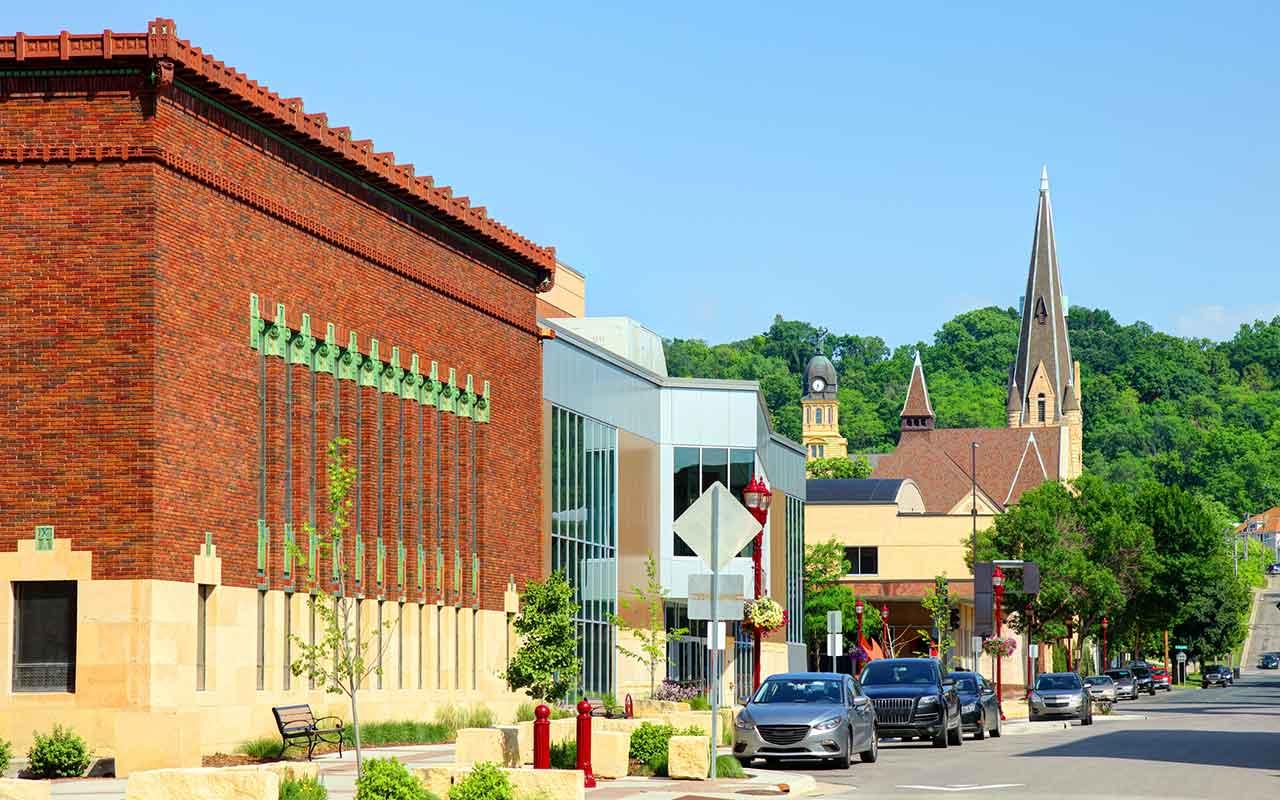
7. Mankato, Minn.
- City population: 45,742
- Share of population 65+: 12.6%
- Cost of living for retirees: 13.3% below the national average
- Average income for population 65+: $55,568
- Wellness score: 57
- State's tax rating for retirees: Least Tax Friendly
If the cold winters and equally harsh tax situation don't put you off of the North Star State, consider retiring in Mankato, about 90 miles southwest of the Twin Cities. It's still a small city, but development is on the rise, and the local economy is growing fast. Revitalization projects have added a nice mix of restaurants, shops, entertainment venues and more to the downtown area in recent years, and the city's strategic plan aims to spread that level of development throughout the Minnesota River Valley. Some goals of the plan include adding housing, specifically within walking distance of where jobs and shops are; expanding Riverfront Park and other recreational land; and build a pedestrian bridge that crosses the Minnesota River to North Mankato.
So far, all that growth has yet to push up living costs. While other metro areas in Minnesota come with above-average expenses, Mankato's cost of living for retirees (and others) remains below the national average. By comparison, Minneapolis has living costs for retirees 7.2% above the national average. Unfortunately, typical incomes in Mankato are also lower, with the overall annual income for residents with earnings at $64,826, on average, compared with $80,269 in Minneapolis.

8. Peoria, Ill.
- City population: 110,460
- Share of population 65+: 16.6%
- Cost of living for retirees: 24.4% below the national average
- Average income for population 65+: $48,221
- Community score: 60
- State's tax rating for retirees: Mixed
A big draw for this relatively small city is its affordability. Housing costs for retirees are particularly low, 61.5% below the national average. Indeed, the median home value is a rock-bottom $124,243, compared with the $357,469 median for the U.S.
Plus over the years plenty of money has been pumping through the city, in a bid to further develop the downtown area. The Downtown Development Corporation of Peoria assisted a number of projects over the years, including the issuance of 714 construction permits in downtown with an estimated value of $74 million. Already the Riverfront area offers a vibrant setting with a number of eateries, shops and attractions, including the Peoria Riverfront Museum complete with its Giant Screen Theater and Dome Planetarium. The museum hosts a senior program with a free bi-monthly morning lecture series and free admission to the museum every second Wednesday of the month to guests age 60 and up. Also, the Peoria Park District offers 64 park sites with miles of hiking trails, golf courses, nature center and more.
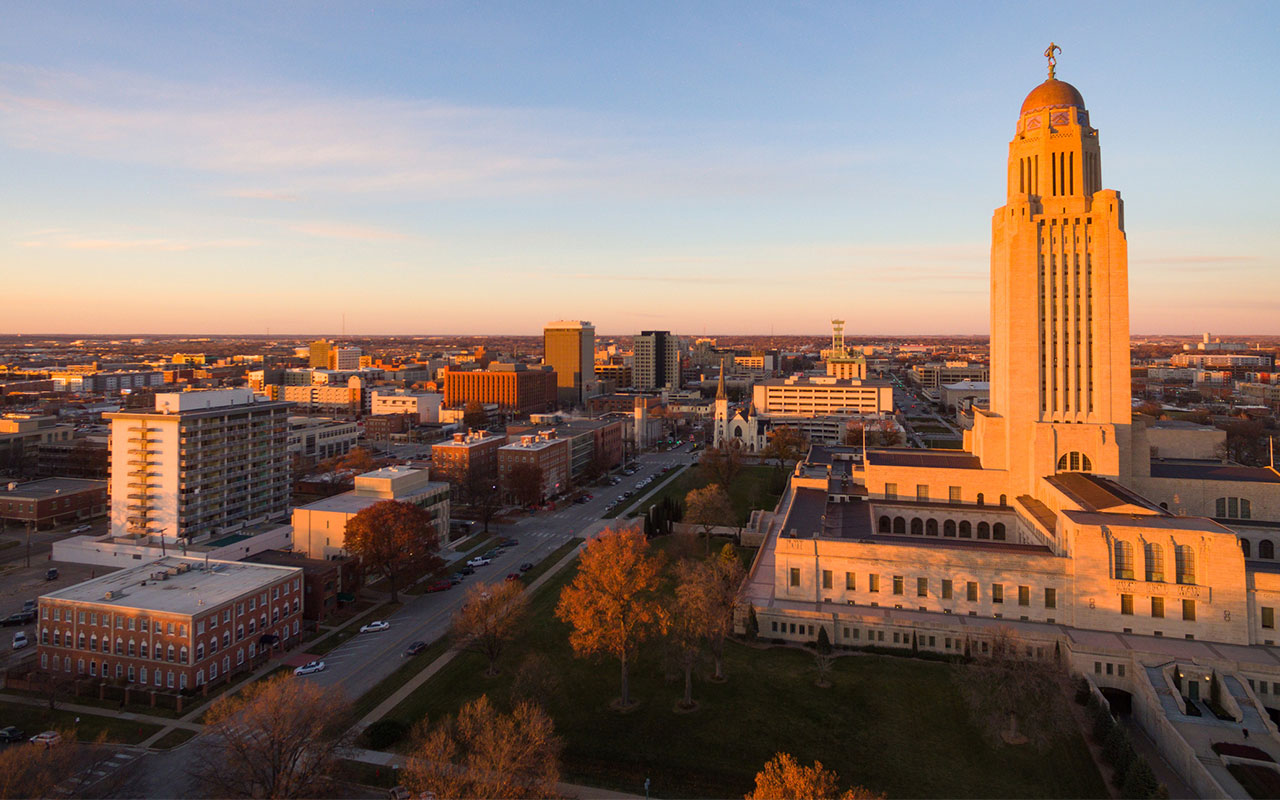
9. Lincoln, Neb.
- City population: 294,757
- Share of population 65+: 14.4%
- Cost of living for retirees: 7.4% below the national average
- Average income for population 65+: $61,837
- Wellness score: 63
- State's tax rating for retirees: Least Tax Friendly
Lincoln may not be home to financial guru Warren Buffett like Omaha, which is about an hour north, but it has plenty of other notable points to recommend it. The capital city offers an abundance of attractions, including more than 130 parks, fine restaurants, an active nightlife and a number of museums and theaters. Highlights include the Sunken Gardens (for budding horticulturalists) and the Museum of American Speed (for car enthusiasts).
Being a college town, home to both the University of Nebraska's Lincoln campus and Union College, the population may skew young. But the city is also prepared to assist its aging residents with about 30 health-care and social service facilities per 1,000 seniors, compared with about 19 per 1,000 seniors in the U.S.
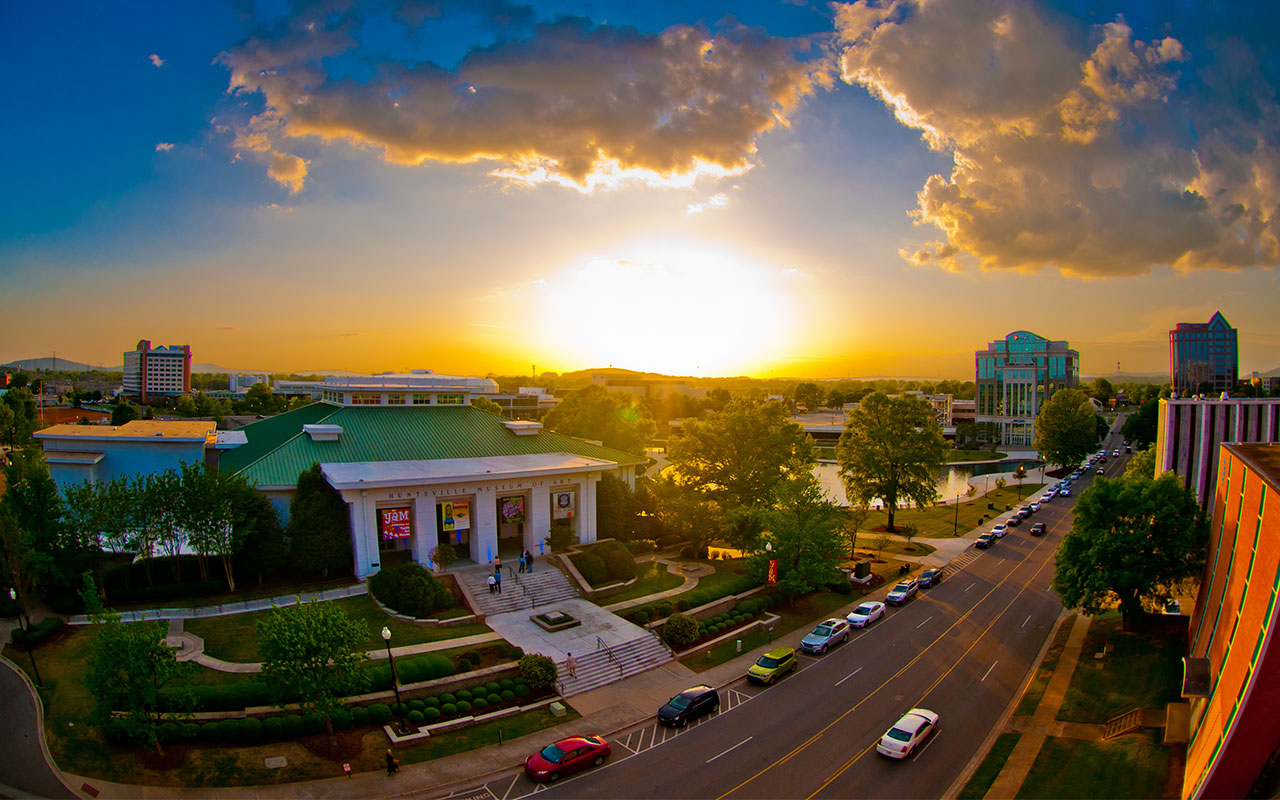
10. Huntsville, Ala.
- City population: 225,564
- Share of population 65+: 16.5%
- Cost of living for retirees: 5.8% below the national average
- Average income for population 65+: $60,443
- Wellness score: 67
- State's tax rating for retirees: Tax Friendly
The Heart of Dixie boasts many great spots for affordable living. And Huntsville, in northern Alabama, is one of the best. It offers all the low-cost, low-tax advantages as the rest of the state, but adds more generous incomes among retirement-age residents.
Home to NASA's Marshall Space Flight Center, the Redstone Arsenal and the Huntsville campus of the University of Alabama, the city offers a robust economy and a highly educated population. There are plenty of cultural attractions, from a sculpture trail to a symphony orchestra, as well as opportunities for outdoor recreation (think bass fishing). In fact, Alabama at-large offers many of Florida's popular retirement attractions — warm weather, nice beaches and plenty of golf — all at a typically lower price.
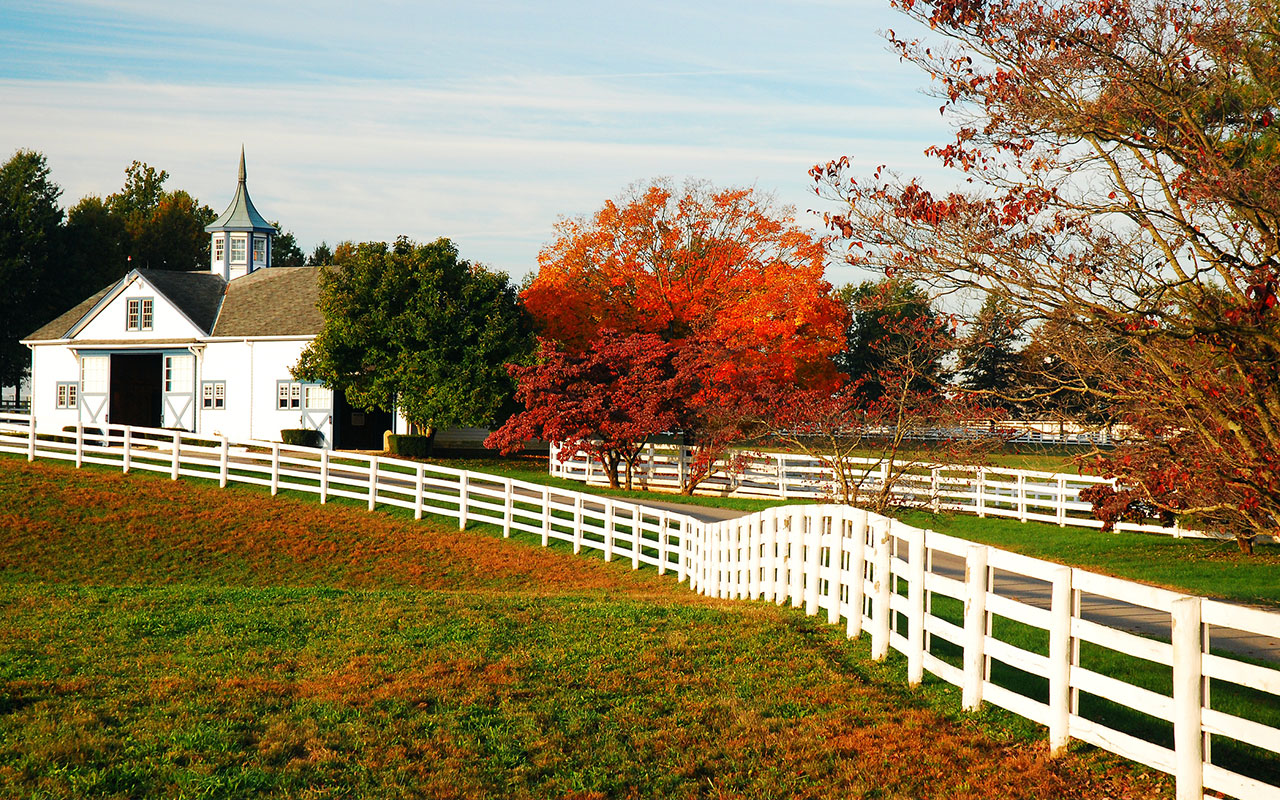
11. Lexington, Ky.
- City population: 320,154
- Share of population 65+: 14.4%
- Cost of living for retirees: 9.2% below the national average
- Average income for population 65+: $64,175
- Community score: 67
- State's tax rating for retirees: Most Tax Friendly
As you'd expect, the Bluegrass State holds plenty of appeal for horse lovers and bourbon aficionados. But retirees can pursue other interests here as well. Lexington has more than 100 parks, five public golf courses and a 734-acre nature preserve with more than 10 miles of hiking trails. For indoor entertainment, check out the numerous galleries and theaters, including the Lexington Opera House and its schedule of ballets, Broadway musicals, comedy shows, operas (of course) and other performances. The University of Kentucky offers the Singletary Center for the Arts, too.
You can also satisfy your academic pursuits at the University of Kentucky. The Osher Lifelong Learning Institute offers various courses, forums, interest groups, trips and events to people age 50 or older; annual membership costs $35. The Donovan Fellowship allows Kentucky residents age 65 and older to take university classes free, space permitting.
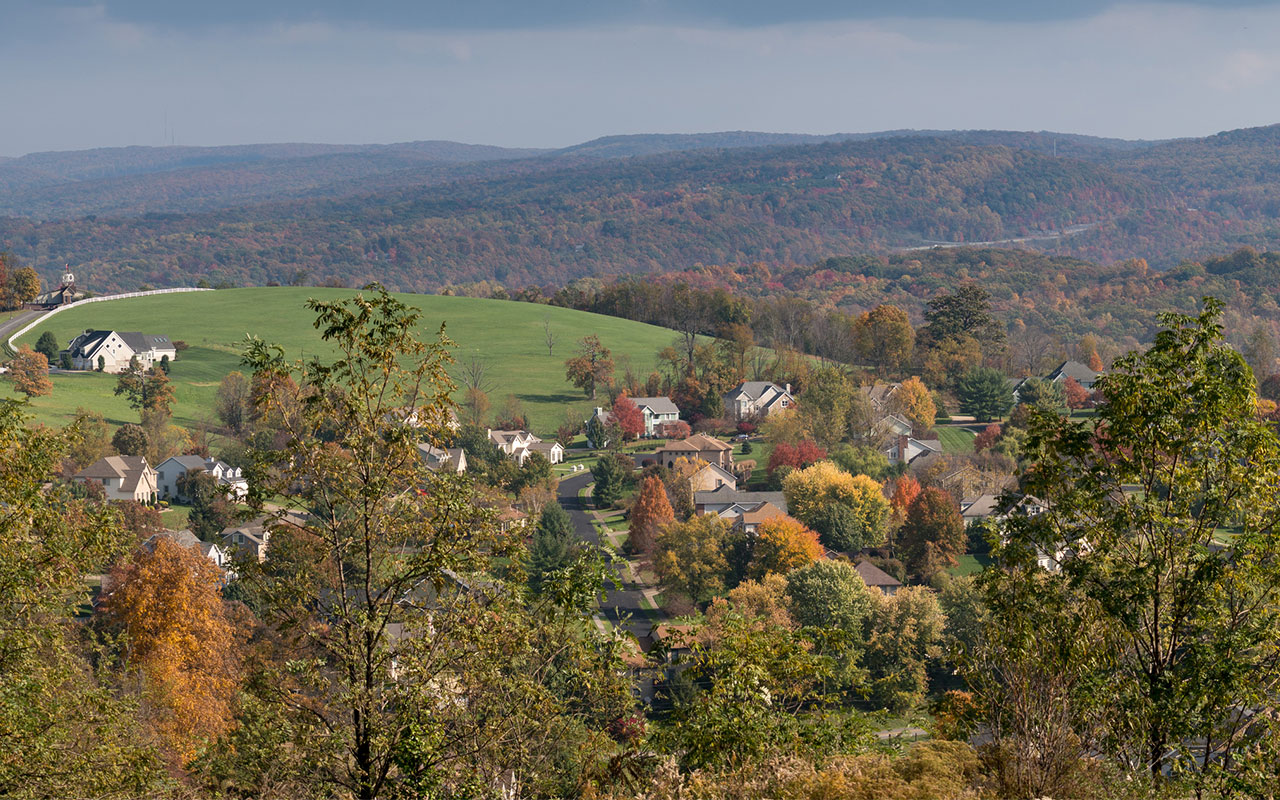
12. Morgantown, W.V.
- City population: 30,429
- Share of population 65+: 10%
- Cost of living for retirees: 10.2% below the national average
- Average income for population 65+: $64,628
- Community score: 65
- State's tax rating for retirees: Not Tax Friendly
West Virginia University offers a number of benefits to older Morgantown residents. If you're age 65 and up, you can take WVU courses, for credit or not, at a discount. Or if you're 50 or older, you can join the local chapter of the Osher Lifelong Learning Institute. A $30 annual membership gets you access to interest groups, trips, social gatherings and program classes, including local and international history, music, computers and yoga.
The University also helps boost local health care services with its many medical facilities, including the Eye Institute, Heart Institute and Ruby Memorial Hospital. The Milken Institute actually credits the area's abundance medical services — including orthopedic surgeons, primary-care clinicians and home-health-care professionals—for contributing to Morgantown's high ranking (18th) among small metro areas.

13. Columbus, Ohio
- City population: 913,175
- Share of population 65+: 11%
- Cost of living for retirees: 8.6% below the national average
- Average income for population 65+: $47,469
- Community score: 62
- State's tax rating for retirees: Mixed
The biggest city in the Buckeye State comes with some of the smallest costs. Housing is particularly affordable: The median home value in Columbus, the state capital, is just $236,962, compared with the national median of $357,469, according to Zillow.
But low costs doesn't equate to a lack of activities. Home to Ohio State University, locals can enjoy the co-ed culture, including big sporting events, concerts and cultural diversions. It also offers Program 60, which invites Ohio residents age 60 and older to take university courses free. Off campus, the downtown area has a lively scene with an eclectic mix of shops, galleries and restaurants. The Short North and German Village neighborhoods, in particular, are worth exploring.

14. Lafayette, La.
- City population: 121,467
- Share of population 65+: 17.3%
- Cost of living for retirees: 9.8% below the national average
- Average income for population 65+: $49,795
- Community score: 59
- State's tax rating for retirees: Tax Friendly
Laissez les bons temps rouler. That's Cajun French for "let the good times roll" and a phrase you ought to learn — and live by — when retiring to Lafayette. Known as the "Cajun Capital City," it's rich in history, distinctive foods, two-stepping tunes and, of course, Cajun and Creole culture. Nature lovers have plenty to appreciate in the area, too. Located on the Mississippi Flyway and the Atchafalaya Loop of America's Wetland Birding Trail, Lafayette offers an abundance of wildlife to observe, as well as plenty of rivers, swamps and bayous for paddling, fishing and exploring.
Plus, it's more affordable than the more (in)famous Louisiana city of New Orleans, which is about 130 miles east of Lafayette. If you're hoping for a retirement that's like one long Mardi Gras celebration, and you want help your budget to stretch as long as the party keeps rolling, Lafayette is the place for you.
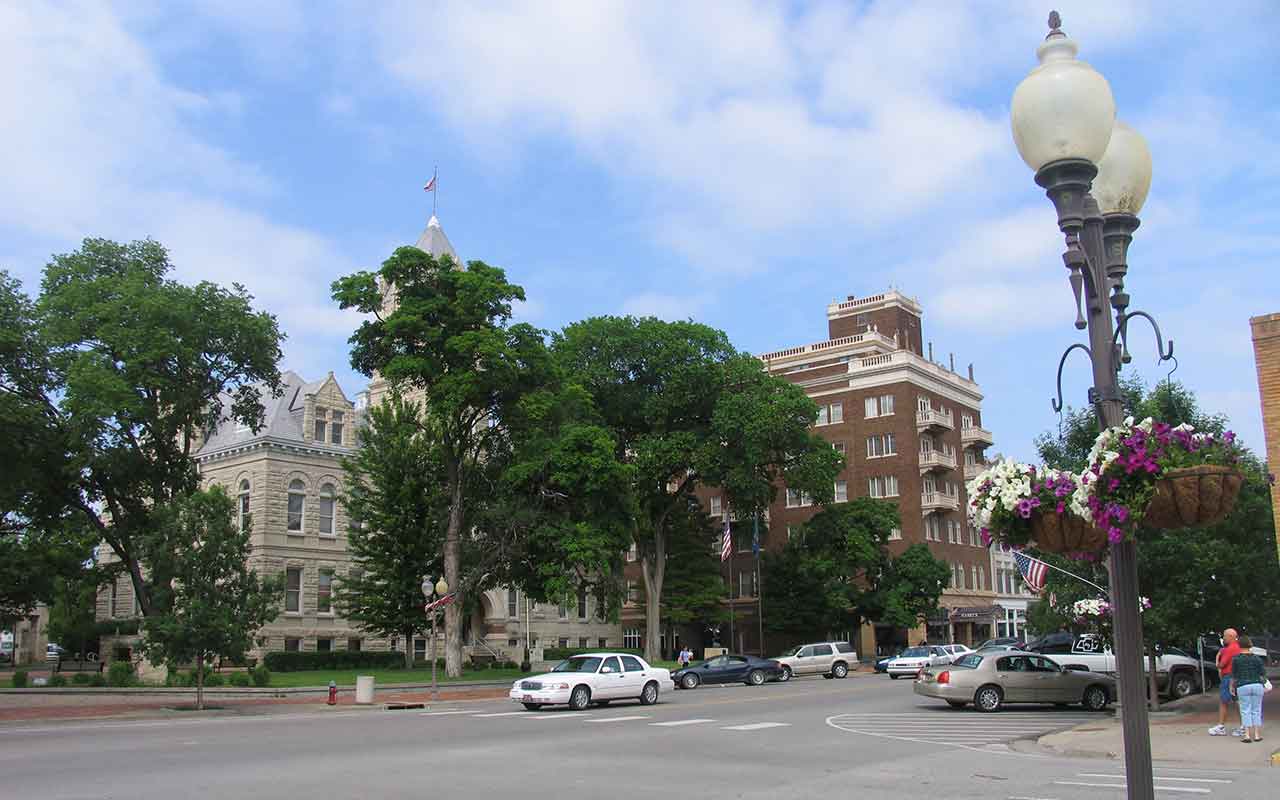
15. Manhattan, Kan.
- City population: 53,682
- Share of population 65+: 10%
- Cost of living for retirees: 16.6% below the national average
- Average income for population 65+: $70,608
- Community score: 40
- State's tax rating for retirees: Least Tax Friendly
The Little Apple may not have all the bright lights and major metropolitan allure of New York City, but it has plenty to recommend itself, as well as significantly lower costs. (The cost of living for retirees in New York's Manhattan is 104.1% above the national average with housing a ridiculous 245.9% above average). Housing costs for retirees in this Manhattan are particularly affordable at 30.5% below the national average. And yet, the average income for all households with earnings is a comfortable $78,054 a year.
Home to Kansas State University, Manhattan affords residents attractive college-town amenities, including the privilege of calling the school's top-notch athletics program your home team. One particularly senior-friendly offering: The university, in collaboration with the local UFM Community Learning Center and the University of Kansas Osher Institute, offers courses year-round for $50 each, along with special events, aimed at encouraging lifelong learning, especially for locals age 50 and older. The city is also developing an expanded trail system — beyond the existing 40 miles of trails throughout the city — for walking and biking throughout the city.

16. Des Moines, Iowa
- City population: 210,381
- Share of population 65+: 12.5%
- Cost of living for retirees: 13.4% below the national average
- Average income for population 65+: $45,563
- Community score: 62
- State's tax rating for retirees: Not Tax Friendly
For retirees looking to live in a big city on a small budget, Des Moines is a good choice. Affordability is just one reason the Milken Institute ranked the state capital among the 100 large U.S. metro areas for successful aging. Des Moines also boasts a strong economy and plenty of health care facilities specializing in aging-related services.
Retirees won’t lack for things to do, either. There are numerous museums and arts venues, including an outdoor sculpture park, a zoo and botanical gardens. There’s even a casino and racetrack in nearby Altoona that hosts annual camel, ostrich and zebra races (sorry, no wagering on these exhibition races allowed).
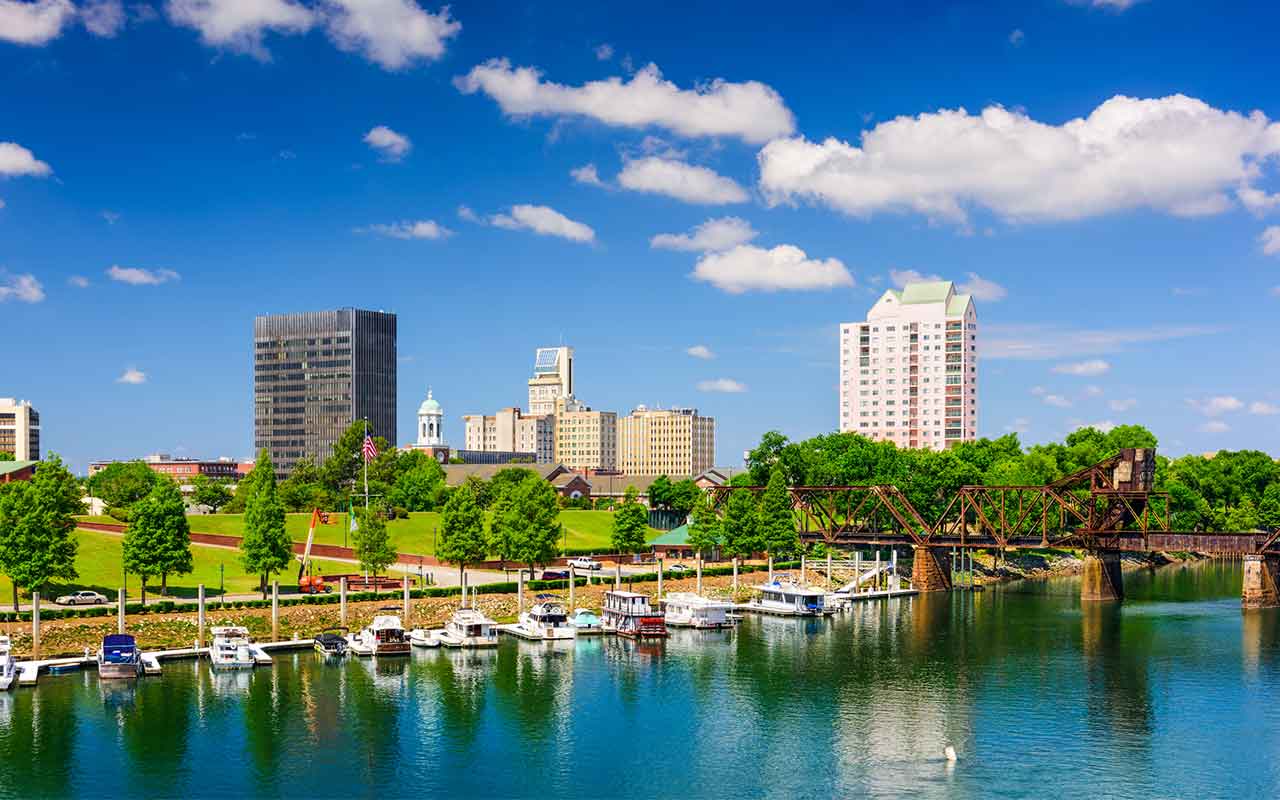
17. Augusta, Ga.
- City population: 200,884
- Share of population 65+: 14.8%
- Cost of living for retirees: 20% below the national average
- Average income for population 65+: $53,185
- Community score: 57
- State's tax rating for retirees: Most Tax Friendly
With its low living costs and generous tax breaks for seniors Augusta is ripening into a particularly peachy city. Revitalization efforts have been pushing especially hard over the past several years, looking to expand the area's appeal beyond the annual Masters golf tournament in April and its accompanying celebrations and tourism revenue. In a walkable downtown, retirees can enjoy new restaurants, museums, galleries and nightlife venues.
In the meantime, you can already enjoy running, walking and biking along the Augusta Canal and kayaking and cruising along the Savannah River. Augusta University, along with other area schools, adds some nice college-town amenities, including free classes for Georgia residents age 62 and up. The University also supplies the region with a top-notch health care network, including three hospitals and numerous specialists focused on oncology, geriatrics and senior health.

18. Jackson, Miss.
- City population: 143,709
- Share of population 65+: 14.8%
- Cost of living for retirees: 23.9% below the national average
- Average income for population 65+: $39,510
- Community score: 57
- State's tax rating for retirees: Most Tax Friendly
Low costs and friendly tax policies can make for a sweet retirement in the Magnolia State, and the capital is particularly alluring. Jackson is a surprisingly eclectic city that holds appeal for Civil War buffs, blues music aficionados and even ballet fans. Every four years, dancers from around the world flock to Jackson for the two-week USA International Ballet Competition to compete for medals, scholarships and spots in ballet companies. Similar competitions are held only in Russia, Bulgaria and Finland.
Jackson ranks high among the best large cities for successful aging due to its affordability and an abundance of nurses, nurse practitioners and orthopedic surgeons, as well as caregiving options and geriatric facilities. Note, however, that the area's residents are prone to unhealthy habits that you don’t want to pick up in retirement, including low levels of activity and high levels of fast-food dining.
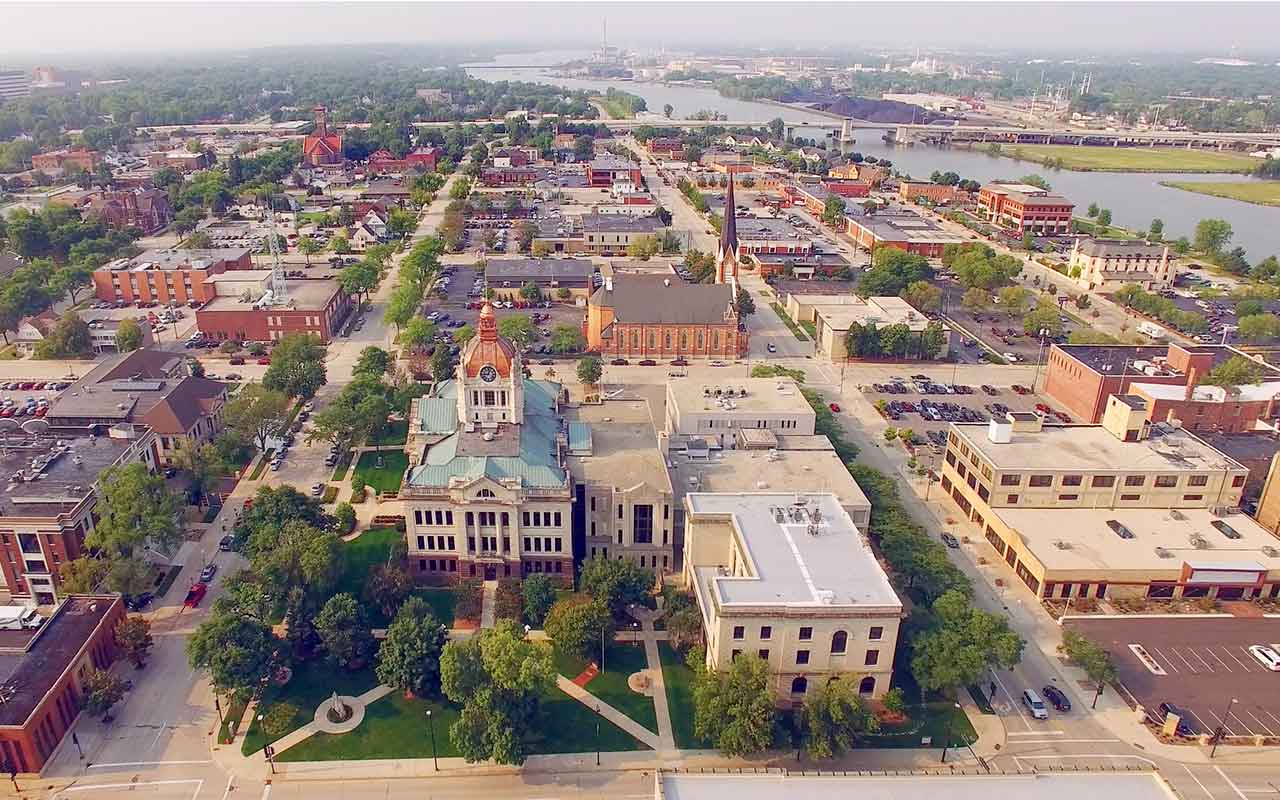
19. Green Bay, Wis.
- City population: 105,744
- Share of population 65+: 13.8%
- Cost of living for retirees: 10.2% below the national average
- Average income for population 65+: $45,067
- Community score: 60
- State's tax rating for retirees: Least Tax Friendly
The University of Wisconsin brings all the benefits of retiring in a college town to the industrial city of Green Bay. That includes a thriving cultural and arts scene, quality medical care, a walkable downtown with an array of dining and shopping options and of course sports.
And while the state's tax situation leaves something to be desired, low living costs are attractive. Green Bay is particularly affordable, with below-average costs for retirees across all spending categories. Housing expenses are notably low, with costs for retirees falling 20% below the national average. Indeed, the median home value in Green Bay is just $146,500, compared with $229,000 for the U.S., according to Zillow.

20. Durham, N.C.
- Metro population: 336,892
- Share of population 65+: 15.1%
- Cost of living for retirees: 1.2% below the national average
- Average income for population 65+: $56,789
- Community score: 70
- State's tax rating for retirees: Not Tax Friendly
Duke University and the University of North Carolina may be bitter sports rivals, but their hometowns of Durham and Chapel Hill, respectively, team up to form a powerhouse metro area, and a great place to retire. The universities play a big role in those two advantages and also boost up the local cultural and recreational scenes, like in many college towns.
Though not a deal-breaker for every retiree, it’s worth noting that violent crimes are more prevalent in Durham than they are for the nation as a whole. The rate of violent crime is 6.8 per 1,000 residents, according to the Neighborhood Scout, compared with a national median of 4 violent crimes per 1,000 residents.

21. Fort Wayne, Ind.
- City population: 269,994
- Share of population 65+: 14.9%
- Cost of living for retirees: 18% below the national average
- Average income for population 65+: $46,040
- Community score: 56
- State's tax rating for retirees: Least Tax Friendly
The Fort Wayne metro area's affordability will not cost you in amenities. Despite being home to a nice collection of quiet neighborhoods, it also houses a thriving arts scene and hosts a number of festivals and events throughout the year, including the family-friendly Three Rivers Festival in the summers. Indeed, the three local rivers — the St. Marys, the St. Joseph and the Maumee — are a main feature of the area, providing ample opportunities for canoeing, kayaking and cruising. More outdoor attractions: Fort Wayne is more than 80 parks and 100 miles of hiking and biking trails.
Fort Wayne is by no means a metropolis, but if you ever feel the need for a small-town escape head two hours south to Richmond. Its claim to fame (other than being budget-friendly): Some of the earliest jazz records were recorded in Richmond by such greats as Duke Ellington and Louis Armstrong.
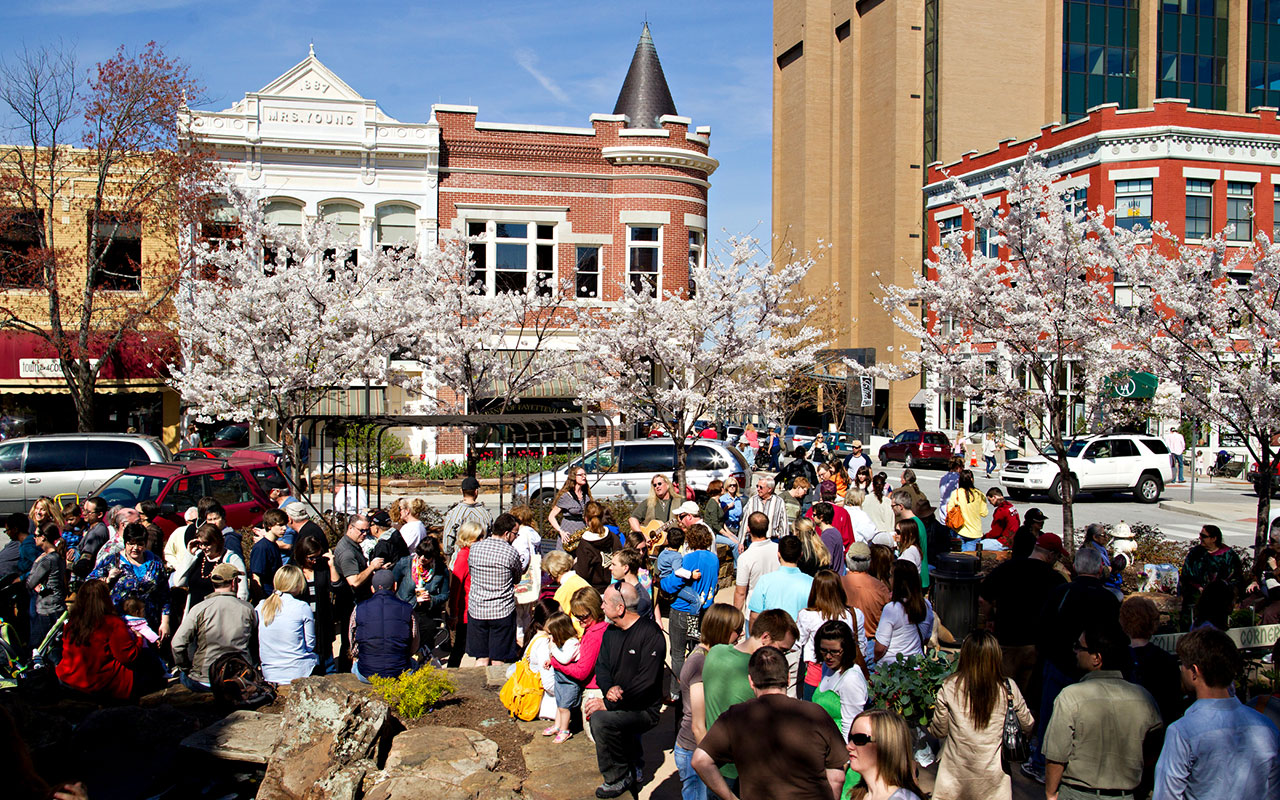
22. Fayetteville, Ark.
- City population: 101,680
- Share of population 65+: 9.1%
- Cost of living for retirees: 9.7% below the national average
- Average income for population 65+: $56,466
- Community score: 56
- State's tax rating for retirees: Not Tax Friendly
The metro area of Fayetteville, which includes Springdale, Rogers and Bentonville, offers low costs but plenty of attractions. The surrounding Ozark Mountains afford residents outdoor recreation and natural wonders to enjoy while the downtown area, home to the University of Arkansas, provides restaurants, shops and a lively music and arts scene, including the Walton Arts Center.
Locals seem happy with what they have at their fingertips with residents reporting high levels of liking where they live, feeling safe and having pride in their community.

23. Oklahoma City
- City population: 702,767
- Share of population 65+: 13.3%
- Cost of living for retirees: 14.5% below the national average
- Average income for population 65+: $54,263
- Community score: 60
- State's tax rating for retirees: Not Tax Friendly
The biggest city in the Sooner State charges residents little in living costs. Housing-related expenses are particularly affordable, a 45.4% below average for retirees. Indeed, the median home value across all ages is $197,047, well below the nation's median of $357,469, according to Zillow. And a private room in a nursing home costs a median $94,170 a year, compared with a median $116,800 a year for the U.S., according to Genworth.
Cowboys may feel particularly at home in Oklahoma City — it has one of the largest livestock markets in the world, after all — but given the area's downtown revitalization efforts over the past several years, everyone can find something to enjoy. The Bricktown Entertainment District has a variety of restaurants and nightlife options. And in neighboring Norman, the University of Oklahoma plays host to bigtime sporting and cultural events.

24. Knoxville, Tenn.
- City population: 198,162
- Share of population 65+: 14.5%
- Cost of living for retirees: 8.2% below the national average
- Average income for population 65+: $39,121
- Community score: 61
- State's tax rating for retirees: Tax Friendly
The Volunteer State is a good choice for retiree nest eggs of all sizes. On top of its friendly-tax status, most parts of Tennessee have below-average living costs across the board for retired residents.
Knoxville is particularly affordable for retirees, compared with, say, Nashville, where living costs among retired people are about the same as the national average. Housing costs for retirees in Knoxville are the biggest factor bringing down costs, at nearly 6.9% below the national average. The city's median home value is just $350,614 versus $262,900 in Nashville and $428,358 throughout the country. Being the gateway to the Great Smoky Mountains and home to the University of Tennessee, the city is rich in activities and attractions to fill your retirement years.

How We Picked the 50 Best Places to Retire
To pinpoint one great retirement destination in each state, we weighed a number of factors:
Cost of living for retirees for major metropolitan and micropolitan statistical areas, with data provided by the Council for Community and Economic Research, includes overall costs, housing, food and groceries, transportation, utilities, health care and miscellaneous expenses.
Household incomes, poverty rates and number of health care facilities are from the U.S. Census Bureau.
Community well-being and physical well-being scores are provided by digital health company Sharecare, in collaboration with Gallup. These are two of the five elements of well-being that make up the overall Gallup-Sharecare Well-Being Index. (The other three elements are purpose, social and financial well-being.) The index is calculated on a scale of 0 to 100 and based on more than 2.5 million nationally representative surveys. Community well-being is defined as "liking where you live, feeling safe and having pride in your community." Physical well-being is "having good health and enough energy to get things done daily." We display the community score for each place we chose.
Population data, including the percentage of the population that is age 65 and older, is also provided by the Census Bureau. The figures are highlighted in these rankings for the benefit of readers, but were not factors in our methodology for ranking the best places to retire.
Taxes on retirees, based on Kiplinger's Retiree Tax Map, which divides states into five categories: Most Tax Friendly, Tax Friendly, Mixed, Not Tax Friendly and Least Tax Friendly. This information is provided for the benefit of readers but was not factored into our selections within each state.
Related content
Get Kiplinger Today newsletter — free
Profit and prosper with the best of Kiplinger's advice on investing, taxes, retirement, personal finance and much more. Delivered daily. Enter your email in the box and click Sign Me Up.

Rapacon joined Kiplinger in October 2007 as a reporter with Kiplinger's Personal Finance magazine and became an online editor for Kiplinger.com in June 2010. She previously served as editor of the "Starting Out" column, focusing on personal finance advice for people in their twenties and thirties.
Before joining Kiplinger, Rapacon worked as a senior research associate at b2b publishing house Judy Diamond Associates. She holds a B.A. degree in English from the George Washington University.
- Donna FuscaldoRetirement Writer, Kiplinger.com
-
 Trump Dials Back Most Tariffs but Targets China
Trump Dials Back Most Tariffs but Targets ChinaThe Kiplinger Letter Wall Street hopes that higher tariffs on most countries are on hold for good. But the trade war between the U.S. and China is heating up.
By Jim Patterson
-
 You’re Probably Not Covered for These 6 Common Home Disasters
You’re Probably Not Covered for These 6 Common Home DisastersHome insurance doesn’t cover everything. Learn which disasters require extra coverage — and how to protect your home before it’s too late.
By Jacob Wolinsky
-
 How to Store Your Financial Documents the Right Way
How to Store Your Financial Documents the Right WayHaving mountains of financial paperwork take over your home can be frustrating. Here's how to get the mess under control while still having your essential information at your fingertips.
By Laura Gariepy
-
 First 100 Days: Trump's Impact on Your Finances
First 100 Days: Trump's Impact on Your FinancesHere are some opportunities to consider regarding investing, interest rates and tax cuts as the financial landscape shifts under the new administration.
By Daniel Razvi, Esquire
-
 What Would Happen if You Put Your Tax Refund in an IRA?
What Would Happen if You Put Your Tax Refund in an IRA?Not only could you get a tax break, but the compounding effect over 35 years could turn the average refund into nearly $14,000.
By Romi Savova
-
 Children Can't Afford to Fly the Nest? Here's How to Help
Children Can't Afford to Fly the Nest? Here's How to HelpThe high cost of living means more adult children are staying at home. Here are four ways to help financially so they can eventually spread their wings.
By Kelli Kiemle, AIF®
-
 How Much Will Car Prices Go Up With Tariffs?
How Much Will Car Prices Go Up With Tariffs?Tariffs could drive car prices up even higher, for new and used cars, as well as for American brands.
By Jim Patterson
-
 What Is the Buffett Indicator?
What Is the Buffett Indicator?"It is better to be roughly right than precisely wrong," writes Carveth Read in "Logic: Deductive and Inductive." That's the premise of the Buffett Indicator.
By Charles Lewis Sizemore, CFA
-
 Six Reasons to Disinherit Someone and How to Do It
Six Reasons to Disinherit Someone and How to Do ItWhether you're navigating a second marriage, handling an estranged relative or leaving assets to charity, there are reasons to disinherit someone. Here's how.
By Donna LeValley
-
 Stock Market Today: Dow Drops 699 Points After Powell Speech
Stock Market Today: Dow Drops 699 Points After Powell SpeechFed Chair Powell warned of a slowing economy and higher inflation but said the central bank isn't ready to cut rates just yet.
By Karee Venema